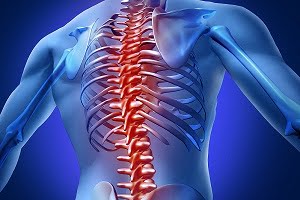Sciatica Pain Relief
Did you ever get up with severe pain running all the way from your upper thighs to your feet that does not go easily? You might be having sciatica pain. As many as 4 out of every 10 people get sciatica, or some sort of irritation of the sciatic nerve in their life.
Sciatica pain is associated with pinching of nerves. When certain nerves become pinched in the lower spine running along the sciatic nerve, intense pain can develop that may run along the entire length of the legs. Sciatica is the largest single nerve in human body. Sometimes, the pain could occur due to spinal stenosis. The pain radiates down the body along the legs.
See also: Sciatica: Causes, Symptoms, Risk Factors, Diagnosis, Prevention, and Treatment
Fortunately, there are some remedies (including alternative and complementary therapies) for back pain that treat sciatic nerve pain and improve your overall spine health. Treatment for sciatic pain involves, hot and cold packs, medicines, exercises and alternative remedies.
Here are listed quick ways to help you in sciatica pain.
Top ways for sciatica pain relief
Over-the-counter pain relievers
Over-the-counter pain relievers can be used for sciatica pain relief. These medicines include:
- Acetaminophen
- Aspirin
- NSAIDs such as ibuprofen, ketoprofen, or naproxen
Prescription muscle relaxants
Muscle relaxants or narcotic medications may also be prescribed for a few days and up to 2 weeks to alleviate pain.
Epidural steroid injections
If the pain due to sciatica is severe, an epidural steroid injection can be used to reduce inflammation. The injection goes directly into the area around the sciatic nerve to reduce the inflammation that may be causing pain. This provides quick relief and is helpful in cases where pain is unbearable and oral medications may take time to relieve the pain.
Heat packs or ice packs
If you feel acute sciatic pain, heat and/or ice packs can be used to help alleviate the leg pain. Ice or heat can be applied for about 20 minutes, and repeated every two hours.
Some people find relief with ice, but others may find heat packs more helpful. The two may be used alternatively. It is suggested to apply ice with a cloth placed over it to avoid an ice burn.
Chiropractic/manual manipulation
Spinal adjustments and manual manipulation is performed by trained and experienced chiropractors. This helps provide better spinal alignments to the bone structure. It can cure a number of medical conditions that can be responsible for your sciatic nerve pain.
Acupuncture for sciatica pain
Acupuncture is based on the philosophy of achieving or maintaining well-being through the open flow of energy using specific pathways in the body. In this procedure, thin needles are inserted into the skin near the area of pain.
Acupuncture has been approved by the U.S. Food and Drug Administration (FDA) and National Institutes of Health as a treatment for back pain, including sciatica.
Massage therapy
Massage therapy has also been found to be helpful for back pain. This increases blood circulation, muscle relaxation, and release of endorphins (our body’s natural pain relievers).
Cognitive behavior therapy
Cognitive behavior therapy can be helpful in managing sciatica pain, particularly in the short term.
Physical therapy
Physical therapy involves stretching and exercise for you that are focused to help improve the posture to take pressure off the sciatic nerve. Lower-back stretches can help relieve the sciatica pain.
Moving in certain ways can worsen sciatic pain, but in some cases it can help relieve the pain. For example, lengthening the spine through stretching or physical therapies can help develop good posture and reduce stiffness, inflammation, and pain.
Avoid sitting for long periods
If you sit for long hours, such as working at a desk or watching TV, this can make worsen your sciatica pain and even cause bulging discs. Include more movements, in general, and targeted exercises as part of your lifestyle habits.
Bed rest
A few days (3-4 days) off your feet can sometimes be quite helpful. It’s important that the floor or matters is firm.
Other ways to relieve your sciatica pain
- Yoga: A study in the journal Pain revealed that people with chronic back pain who practiced yoga for 16 weeks noted pain and disability reduced significantly. Although, yoga’s effects on sciatica are less clear.
- Biofeedback
- Rest
How long does it take for sciatic nerve pain to go away? Is sciatica permanent?
If the symptoms of sciatica are mild and it is acute sciatica, it usually does not last longer than 4-8 weeks. Medical treatment is not necessary in this condition.
In some people, sciatica pain can last a very long time despite trying various treatment options. Although, people with sciatica have a good chance of recovering, but about 20-30% percent may experience persistent problems even after one or two years.
In some cases, there can occur a nerve damage that can become permanent causing symptoms such as persistent numbness in the thighs and buttocks. Therefore, you must see a professional if the pain lasts for a long time.
Medical professionals who treat sciatica
There are a variety of types of spine care professionals (surgical as well as non-surgical) who are specialized in treating the symptoms of sciatica. These may include, such as:
- chiropractors
- rehabilitation specialists
- pain management specialists
- physical therapists
- physiatrists
- physical medicine expert
- surgeons
- rheumatologists
- neurologists
- orthopedic specialists







